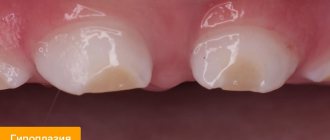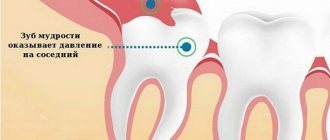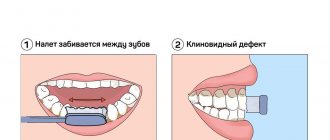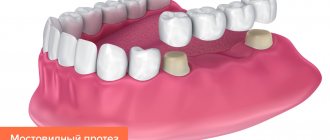People turn to the dentist when they have any problems with the health of their teeth or gums. Pain in the tooth, swelling of the gums, increased sensitivity of the teeth, bad breath - all these phenomena can appear against the background of various dental diseases and, based on the nature of the disease, the specialist selects the optimal method of dental treatment.
Whatever method of dental treatment is chosen, its main task will be to preserve all the functions and aesthetics of the tooth. Below we will look at a variety of dental treatment methods that are used in modern dentistry and will also talk about complications that can occur when errors in treatment procedures were made by the doctor.
Modern dental treatment
Dental treatment of teeth is a set of measures aimed at eliminating the inflammatory process and restoring chewing functions. The most common disease is, of course, caries and its complications. The timing of dental treatment directly depends on the stage of development of the disease. Thus, installing a dental crown or implanting several teeth will take different times, depending on the number of specialist appointments. It is worth noting that regular preventive examinations allow you to notice pathologies at an early stage, allowing for dental treatment without extraction and significantly simplifying it.
If a patient comes to the clinic with acute pain, the task becomes much more complicated. Therefore, every dentist will tell you that the best dental treatment is prevention.
Photos before and after dental treatment
Photos Before and After treatment of chewing teeth.
Photos Before and After treatment of front teeth.
How to treat caries: stages
To get rid of caries, you need to make an effort, because although modern drills do not vibrate like hammer drills, they still make us wait for the sudden appearance of acute pain - while drilling out carious tissues. Fortunately, modern anesthetics allow the dentist to properly numb the teeth during treatment - unlike the ineffective novocaine and lidocaine that were widely used previously.
Proper treatment of dental caries in dentistry consists of a number of successive stages, each of which has a clear goal. But nevertheless, the most important thing is the complete removal of caries, because... if the removal of tissue affected by caries is incomplete, it will immediately develop under the filling and will certainly lead to the development of pulpitis and the need to remove the nerve from the tooth. Watch the video below to see how hard tooth tissues affected by caries are removed.
Treatment of dental caries: video 1-2
In detail about the stages of treatment of average caries -
But before we move on to drilling out the carious tissue, which you could see in the video above, you still need to perform a number of procedures to prepare the tooth for treatment, as well as anesthetize it with an injection of a local anesthetic. For those who like stronger anesthesia, there are methods of sedation and general anesthesia.
- Cleaning a tooth from plaque (Fig.4) –
Before starting treatment, it is necessary to hygienically clean the tooth, as well as neighboring teeth, from plaque and tartar. For this purpose, ultrasonic attachments are used to remove massive dental plaque, as well as special brushes and abrasive pastes to remove soft microbial and pigmented plaque. - Determination of tooth color using a special scale (Fig.5) –
Hygienic treatment of the tooth also helps the doctor to accurately select the color of the filling material. In this case, the filling will match the color of the tooth, and will not stand out against the background of the tooth’s own tissues. This is especially important for teeth that are visible when you smile. - Anesthesia (Fig. 6) – is it painful to treat caries: for painless drilling of carious tissues if the tooth is alive, local anesthesia is necessary. Modern painkillers in dentistry, for example, ultracaine or ubistezin, make the intervention absolutely painless. Depending on the amount of anesthetic administered and the method of anesthesia, the anesthesia time can last from 40 minutes to several hours.
The only pain that the patient can feel is the moment the needle is inserted into the gum, as well as the process of removing the anesthetic into the tissue. This process can sometimes be painful, which largely depends on the patient’s level of pain sensitivity, as well as on the speed at which the anesthetic is injected into the soft gum tissue. The faster the solution is administered, the more painful the injection. - Drilling out carious tissues – As can be seen in Fig. 7, enamel is always destroyed with average caries to a lesser extent than the underlying tissue (dentin). This is due to the fact that enamel is much, much stronger and harder than dentin. Therefore, the carious cavity usually expands in depth, and the entrance hole in the enamel can even be quite small.
The dentist must drill out the edges of the enamel overhanging the carious cavity, and also remove all carious dentin. If you leave even a small amount of dentin affected by caries and put a filling on top of it, then very soon you can expect complications - the rapid development of caries under the filling and destruction of the tooth crown, with the subsequent development of pulpitis and periodontitis (24stoma.ru).
In Fig. 8, the dotted line shows the approximate boundaries of tooth tissue removal. In this way, the cavity is given a relatively correct shape and the next stages of treatment can begin. It should be noted here that recently new methods of tooth preparation have appeared, which help to do without traditional drilling. Recently, it has become possible to remove caries with a laser.
- Isolation of tooth from saliva – this is a very important stage! After the carious tissue is drilled out, and before filling the tooth, the doctor must carefully isolate the tooth from saliva and even the patient’s wet breath. These factors will greatly affect how long the filling will last. Previously, cotton balls and gauze balls were used for insulation, which were used to cover the tooth on all sides. It should be noted that this is a very unreliable and ineffective protection.
For the last 10 years, “cofferdam” has been used for these purposes. The latter is a thin latex “scarf” in which holes are made for the teeth. This scarf is pulled over the teeth (Fig. 9-10), after which 1-2 special metal clasps are installed on the necks of the teeth, which hold the rubber dam against the gums. The edges of such a latex scarf are attached to a special frame (Fig. 11), and we see the result - a group of teeth is completely isolated from the oral cavity.Installing a rubber dam is quite labor-intensive. Some doctors refuse to use it on principle to save their time. The doctor’s use of a rubber dam in the treatment of caries indicates that the doctor is very attentive to the quality of his work, because the quality of the filling will be affected not only by the accidental contact of saliva on the tooth being filled, but also simply by the moist breath of the patient himself.
- Medical treatment of a carious cavity - a cavity formed in the tooth during the removal of carious tissues - is treated with antiseptics.
- Restoring the contact point between teeth – If caries is treated on the contact (interdental) surface of the tooth, then it is also necessary to restore the side wall of the tooth.
This is a rather labor-intensive and complex task than simply treating average caries, for example, on the chewing surface of a tooth. In this case, another stage is added - the installation of special devices to restore the side wall of the tooth. Such devices include wedges (a) and matrix (b) in Fig. 12. Read more about the treatment of interdental caries in the article: → “Treatment of caries between teeth” - Etching the enamel with acid (Fig. 13) is necessary so that the adhesive (something like glue), which will be applied to the surface of dentin and enamel at the next stage, can penetrate deeply into the tooth tissue. For this purpose, a gel based on phosphoric acid is used. After etching, all the gel should be thoroughly washed off, and the tooth surface should be slightly dried.
- Treatment of dentin and enamel with adhesive - for better fixation of a permanent photopolymer filling, enamel and dentin are treated with a special adhesive, which (after absorption) is illuminated with a photopolymerization lamp.
- Applying a gasket under the filling (Fig. 14 b,c) - an insulating gasket, usually made of glass ionomer cement, is applied to the bottom of the cavity. The need for lining material under the filling is explained by the complex mechanisms of polymerization shrinkage of the filling material and other factors (we will not dwell on them).
- Filling – dental filling is necessary to restore the shape of the tooth, its aesthetics, as well as to restore chewing efficiency. For this purpose, photopolymer composite materials are usually used. They are applied in layers and each layer is illuminated with a special lamp, which allows the material to harden.
- Grinding and polishing of the tooth - after the shape of the tooth has been restored using filling material, it is necessary to grind and polish the filling, because it is rough and uneven. Final polishing gives the filling a shine and aesthetics comparable to that of tooth enamel. This completes the treatment of average caries.
→ Cost of treatment of dental caries
Filling a carious defect: video 3-4
Please note that dentists use special metal strips (matrices) and wedges to restore the side walls of teeth. In addition, tooth filling in both cases is carried out using a rubber dam.
Endodontic dental treatment
What is endodontic dental treatment? This is a procedure aimed at treating root canals, usually using a microscope. If you ignore the symptoms of caries for a long time, pulpitis, periodontitis and other complications develop. Endodontic treatment of teeth under a microscope will help eliminate acute pain and relieve inflammation. The help of an endodontist is indispensable when there is a suspicion of a dental cyst or granuloma. Often, after canal treatment, complications arise due to poor quality treatment or stuck pieces of broken instruments. In such difficult cases, they also resort to endodontic treatment of the tooth canal under a microscope.
Why is this necessary?
A reasonable question arises: why should private clinics treat teeth under the compulsory medical insurance policy if clients come to them with real money?
Firstly, it is convenient for the owners of such establishments. It is known that the more clients, the higher the profit. Therefore, if the state has undertaken to pay for the patient’s treatment, then why not accept as many people as possible. In any case, the money for treatment will go to the clinic’s account.
Rarely take vacations: strange work habits of Americans
Apple paid employees bonuses of up to $180 thousand
It looks expensive, but the design is simple: 10 minimalist manicure ideas for work
Secondly, it is convenient for ordinary citizens. Private clinics are often more trustworthy. And, as a rule, there are no huge queues there.
Treatment without drilling
Dental treatment without drilling involves the use of minimally invasive procedures. Some of them have been mentioned above. In particular, lasers are actively used to eliminate caries. This type of dental treatment is performed for adults and children. Among the main advantages is a reduced risk of any infection, since contact of equipment with organs and tissues of the oral cavity is eliminated.
Also, dental treatment without a drill can be performed using the chemical-mechanical method. A special preparation is applied to the area of the tooth affected by caries. It contains sodium hypochlorite and amino acids. Next, the specialist treats the affected area using special tools. Since only dead tissue is removed, the filling occupies a much smaller area, and it is also possible to preserve healthy areas as much as possible.
Another interesting technique was developed by German specialists. It is based on the bactericidal properties of ozone and is often used in pediatric dentistry. The gas used to treat teeth completely destroys microorganisms that cause caries.
The latest non-invasive methods
Before dental treatment, a specialist determines the degree of destruction of enamel, hard tooth tissue and dentin. In advanced cases, a granuloma forms around the root, which may subsequently increase in size. Modern methods of dental treatment make it possible to successfully combat the first signs of caries without the use of a drill. Among them:
- laser dental treatment;
- application of chemical-mechanical techniques;
- fluoridation – treatment of teeth with calcium;
- application of the air-kinetic method;
- ozone therapy.
Gum inflammation
Common gum diseases are gingivitis and periodontitis. In the first case, inflammation develops only in soft tissues and does not affect the dental unit. Characterized by swelling, redness and bleeding of the gums. If you do not seek dental care, gingivitis can become chronic. Or develop into periodontitis. This involves the root canals and hard tissues of the tooth. The adjacent gum peels off, and a purulent process begins in the resulting cavity. Without timely treatment of teeth, this leads to their loosening and loss.
The choice of therapeutic methods is based on the condition of the oral cavity and the severity of the pathology. As a rule, the following are used for the prevention and treatment of gum inflammation:
- Rinse procedures. After the examination, the doctor prescribes the optimal type of solution (alcohol-based antiseptics or with the addition of chlorhexidine).
- Ointments and gels (healing, anti-inflammatory, antifungal).
- Therapeutic toothpastes (anticaries, antiseptic).
- Medicines.
In most cases, soft tissue inflammation is caused by a poorly installed (polished) filling or crown. Therefore, when a disease appears, it is important not to delay visiting a doctor.
Physiotherapy (electrophoresis, darsonval, massage) is used as additional methods for treating soft tissue diseases in the oral cavity.
Treatment of a tooth under a crown
After some time has passed after the installation of the prosthesis, subsidence of the gums and exposure of the neck of the tooth are often observed. All this contributes to the development of caries, and therefore pulpitis, periodontitis and other unpleasant diseases can appear even when the tooth is covered with a crown. Only a specialist can identify the problem and treat the tooth under the crown. If a disease is detected, the structure may need to be removed.
It is also the cause of problems - errors in the manufacture of the prosthesis: if the crown does not fit tightly around the neck of the tooth, bacteria can get under it. The specialist immediately removes such structures and carries out dental treatment. The crowns will subsequently be replaced, which will preserve the teeth and prevent the development of more serious diseases.
The structure of the human tooth
Each tooth consists of a crown - a part of the tooth protruding above the surface of the gum, a root immersed in the bone socket of the jaw; The crown and root of the tooth are separated by a neck.
The crown of the tooth is covered with enamel, the hardest tissue of the human body. Beneath the enamel is dentin, a bone-like tissue that makes up the bulk of the tooth. The root of the tooth is covered with cementum, a thin layer of tissue that resembles bone in structure. Inside the crown and root there is a cavity filled with soft tissue - pulp. The pulp consists of loose connective tissue, vessels, nerves and various cells.
In the jaw, the teeth are held in place by tissues called periodontium.
Anesthesia
Conventional local anesthesia is performed very often today. Patients with increased sensitivity of soft tissues and children can first be given topical anesthesia. Also in dentistry, painkillers are used for dental treatment. The type of drug and its dosage are selected individually - it all depends on both the patient’s health condition and the clinical situation. For example, pediatric dentists often treat teeth with nitrogen. Laughing gas causes a feeling of mild euphoria and is not hazardous to health. The patient relaxes, and the doctor can calmly perform all the necessary manipulations. But general anesthesia in dentistry is used only in the most extreme cases.
Anesthesia after dental treatment can last up to 3 – 4 hours. Everything here is very individual and depends on how much anesthetic was used.
What to do if a tooth becomes inflamed?
It is clear that it is better to consult a dentist. What if the doctor is far away, you are at the dacha, it’s night and there is no one to leave the children with? You can try to relieve the pain yourself, using what you have at hand. The World Wide Web is full of tips on how to relieve tooth inflammation at home.
Folk remedies recommend:
- Gargling with herbal decoctions. Sage, chamomile, calendula are suitable. It is important that the broth is not too hot or cold. The optimal temperature is 50-60 degrees.
- Applications from clove oil, eucalyptus, propolis tincture. Be careful with tinctures, alcohol can burn the mucous membranes.
- Solutions of salt and soda help wash away food debris and relieve irritation. A drop of iodine in the solution will perform a disinfecting function.
If there are no herbs and it is unclear what to rinse with, there is a modern life hack. Mouthwashes contain antimicrobial agents and herbal extracts. They will cope no worse than infusions and decoctions.
Important! A sick tooth should not be heated. Avoid heating pads, bags of hot sand, and salt.
But a cold compress can relieve swelling and reduce discomfort.
If you have painkillers in your medicine cabinet, don’t delay taking them. The pain is exhausting and makes it difficult to concentrate. It’s better to relieve the pain and think about the next steps.
Remember, taking a pill does not fix the problem. Knowing how to relieve pain is useful, but only a qualified dentist can find the cause and eliminate it.
Features of treatment of anterior teeth
Treatment of anterior teeth is associated with some difficulties. A characteristic feature of the incisors is their smaller size compared to other teeth. The work that a dentist has to do is truly jewelry. Only an experienced specialist can achieve a high degree of aesthetics.
In the process of treating and restoring the shape of a diseased tooth, a filling can be performed using light-curing polymer materials or veneers. Their shade is selected taking into account the color of the enamel of the patient’s healthy teeth.
The last resort is the installation of crowns. This method is justified only if the tooth is severely damaged. Treatment of lower teeth in the frontal zone is performed using similar methods and techniques.
Reason to see a doctor: symptoms that cannot be ignored
If a tooth hurts, treatment should never be delayed. Any delay is fraught with serious problems not only for the oral cavity, but also for the whole body. The sooner the source of infection is identified, the easier and faster dental treatment can be performed in the clinic. Symptoms that indicate serious problems:
- acute throbbing pain in the tooth;
- significant increase in sensitivity;
- bad breath during regular hygiene;
- bleeding and swelling of the gums;
- tooth mobility;
- difficulty opening the mouth;
- the appearance of a defect on a tooth, an area with uneven edges and pigmentation.
Stages of dental treatment
Despite the fact that modern methods involve virtually painless dental treatment, fillings and other procedures, many patients appear in the doctor’s office with acute pain and a whole “bouquet” of oral diseases. Treatment usually includes the following steps:
Diagnostics
A specialist examines the oral cavity, identifies problems and draws up a treatment plan. Additional examinations may be ordered. At the same stage, the doctor conducting the consultation discusses the cost of services with the patient and selects the most convenient time for an appointment.
Professional oral hygiene
It is advisable to begin dental treatment only after their surface is cleaned of hard and soft deposits.
Treatment
The process of treating caries involves removing the affected tissue. The procedure is performed using local anesthesia, and the treated area is isolated from the rest of the mouth. Rubber dam or cotton swabs can be used for these purposes.
Seals
Filling is carried out after cleaning the carious cavity. The final procedure is grinding the filling - this is necessary to eliminate the occurrence of discomfort during the process of chewing food.
Modern methods of pain relief
Electronic automated anesthesia system “SLEEPER ONE” (France)
One of the greatest achievements in the field of dentistry has been the invention of new methods of pain relief. Anyone who has had problems with teeth knows that the main issue for the patient has always been the possibility of effective pain relief. For many, fear of painful procedures has become the main reason for refusing dental treatment, leading to disastrous results. Today, not only new treatment methods that do not require anesthesia at all, but also modern methods of pain relief help to overcome this problem.
Among the medications, it is worth noting the newest drugs that have replaced the usual novocaine and lidocaine. Their effect is many times stronger and does not give side effects. In addition to medications, other new means are now being used. One of them is sedation. This is a type of anesthesia in which the patient is not completely immersed in sleep with a complete loss of consciousness. The state of sedation can be called superficial sleep, when the patient is conscious, but with an altered pain threshold and reduced anxiety. The drugs necessary to achieve this state are introduced into the body in the form of a breathing mixture (breathing mask), or in the form of an intravenous infusion. The method has much fewer contraindications and side effects than general anesthesia.
Why does a tooth hurt after treatment and what to do in this case?
Aching pain after treatment occurs quite often. However, its causes may be different, which means that the doctor’s actions to eliminate it are required different. Let's look at the most popular:
- Very often, after treatment, the tooth reacts to mechanical stress when chewing food. As a rule, minor pain appears after treatment of deep caries. This is due to the fact that the filling puts pressure on the pulp. Over time, the pain will pass.
- It is not uncommon for a tooth to ache after treatment and due to an individual reaction to the doctor’s intervention. The pain may persist for several days.
- Acute pain after dental treatment cannot be ignored. You must immediately contact a specialist. Unpleasant pain may indicate that there is inflammation after dental treatment.
- If you are sensitive to irritants such as hot and cold drinks, sweet or sour foods, then there is a high probability that the overhanging edge of the filling will injure the periodontal tissue in the gum area. This phenomenon leads to tissue inflammation and exposure of the tooth root, which is extremely sensitive to any irritants. Therefore, be sure to contact the dental clinic if your tooth aches after recent manipulations. The treatment was most likely carried out poorly.
Indications and contraindications
Indications for treatment of the disease are both visual and tactile; these include:
- color change, enamel pigmentation;
- painful reaction to hot or cold, sweet or salty;
- enamel chipping;
- darkening of the cervical segment;
- carious cavity;
- a dark gap located along the border of the filling.
There are also contraindications to caries treatment:
- acute respiratory diseases;
- first and third trimesters of pregnancy;
- acute stage of periodontal disease, which is accompanied by severe bleeding of the gums;
- herpes in the acute stage.
How much does dental treatment cost in Moscow?
Taking into account the fact that therapy involves an integrated approach, the total cost of dental services will consist of the costs of individual procedures. Approximate prices for dental treatment in Moscow are presented in the table below.
| Type of service | Price |
| Specialist consultation | from 500 rubles, but most often it is free |
| Professional hygiene of the entire oral cavity | from 3,000 rubles |
| Treatment of pulpitis (depending on the number of channels) | from 4,000 rubles |
| Filling using light-curing polymer material | from 3,000 rubles |
| Aesthetic restoration of anterior teeth | from 5,000 rubles |










